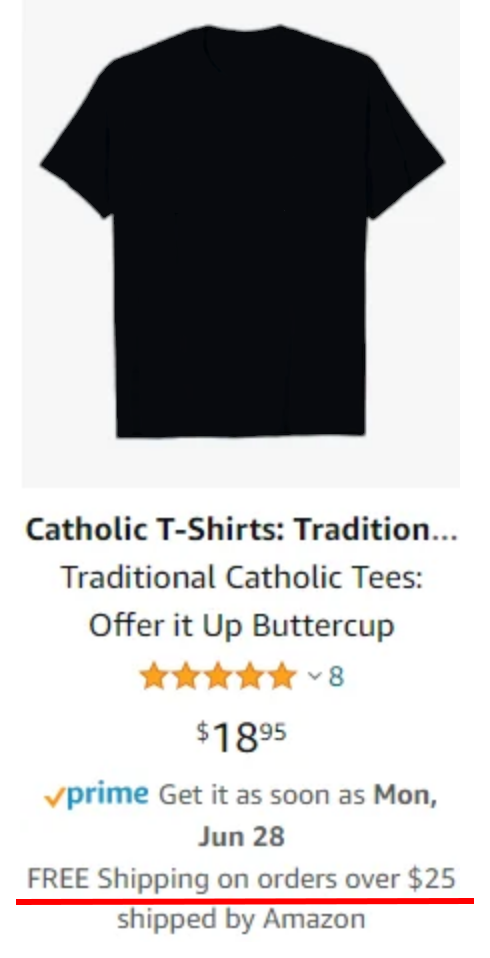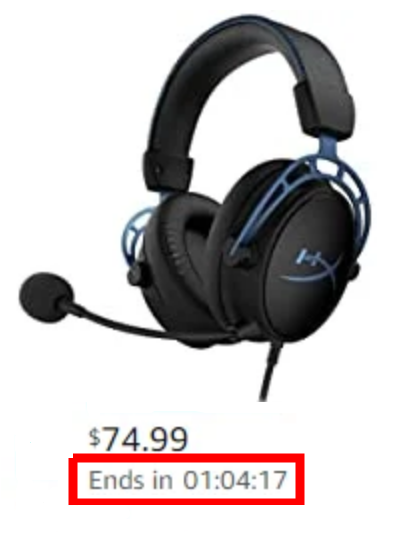
When monitoring metrics for eCommerce websites, it is crucial to recognize that these metrics only indicate symptoms, and various symptoms can be identified through different metrics. By tracking these metrics, you can discover various behavioral trends on your website and take necessary measures to enhance the conversion rate.
To comprehend how monitoring eCommerce metrics can boost the average conversion rate, let’s analyze them using company “X” as an example. This company offers two products: one priced at $1 and the other at $100.
What is a Conversion rate?
Conversion on your website refers to any desired activity performed by a visitor. For an eCommerce business, a conversion would mean a visitor completing a checkout process.
The conversion rate is determined by the number of checkouts divided by the number of unique visitors.
For example, if you have an average of 1000 visitors to your website each day and 50 of them actually make a purchase, your conversion rate would be 5%.
Optimizing for conversion rate means increasing the number of visitors who become paying and returning customers. This helps in achieving the following:
- Converting more of your current visitors, which is more cost-effective than acquiring new visitors.
- Generating more revenue without increasing your costs.
Since companies already spend money on acquiring website traffic through various methods like PPC, SEO, and Email marketing, the next step should be to focus on converting more of those visitors into customers. This is where conversion rate optimization (CRO) comes into play.
An example success story is JOSERA, a German retail company, that achieved a 29% increase in conversion rates through optimization powered by VWO.
What is an Average order value?
In the world of eCommerce, there are times when revenue can decrease due to a decline in conversions among high paying customers. To avoid facing these situations, it is important to monitor the average order value (AOV), as it provides a direct indicator of the actual profit performance.
The formula to calculate AOV is simple: total revenue divided by the number of checkouts. By comparing the AOV with the Cost Per Order, you can get a clear picture of the profitability of each order. For example, if your Cost Per Order (including shipping costs) is $1 and your AOV is $10, you are making a profit of $9 per order. By increasing the AOV by 10% to $11, you can achieve an additional profit of $1 per order.
There are many easy ways to increase the average order value (AOV) of your eCommerce business:
Establish a threshold for providing free shipping
One useful tip for boosting your eCommerce sales is to provide free shipping on orders that exceed your average order value (AOV) by a small margin.

We mention “small margin” because free shipping can be a complex topic. While offering free shipping may increase the average order value (AOV), it could potentially decrease the total number of transactions due to the additional shipping charge. According to the Baymard Institute, the average rate of cart abandonment is close to 70%. CXL also states that lack of free shipping is one of the main reasons why customers abandon their shopping carts. To make the best decision, you can conduct an A/B test comparing completely free shipping to free shipping after reaching a certain minimum order value. The key metrics to closely monitor are AOV, sales volume, revenue, and the rate of cart abandonment.
You should try to offer exciting discounts on your minimum purchase at our eCommerce store.
Do you have an eCommerce business and want to clear out your dead stock by offering a generous 20% flat discount? Well, here’s a suggestion: you can make it even more enticing by letting customers know that they can avail of the discount on a minimum purchase of $50 or $100, or any amount that compensates for the margins lost due to the discount. It’s all about finding the right balance. Give a little discount, but also gain some profit.

Limited time offer
Shoppers tend to procrastinate and mull purchase decisions. To continue the ‘special discounts on minimum purchase of 50$’ tip, adding a limited duration to the offer can create a sense of urgency among visitors and encourage them to buy more in one go. For example, ‘Get 40% off on all products’ might motivate the visitor to browse products. But when you say ‘Get 40% off on all products for next 2 days’, it compels them to act right away.

Try volume discounts
Paperstone, an office supplies company, has introduced a special offer for customers who make bulk purchases of the same product. By utilizing VWO, a leading platform for optimizing website conversions, Paperstone conducted an A/B test to launch a bulk discount deal on their eCommerce site. The results were remarkable, with the average order value increasing by 18.94% and revenue soaring by 16.8%.
However, it is essential to strike a balance when determining the discount value. While it is crucial to attract new customers, it is equally important to ensure that the profit margins are not significantly reduced. Finding the sweet spot where both objectives are met is key.
In summary, Paperstone has successfully implemented a bulk discount strategy through VWO, resulting in substantial growth in sales and overall revenue. The company focuses on offering friendly and competitive pricing to its valued customers in the eCommerce market.
Upsell
Upselling, when implemented wisely, provides a great opportunity to increase the value of a purchase. If a customer is interested in a 320GB Windows 7 laptop, you can subtly present the attractive image of a 500GB Windows 8.1 laptop as well. In simple terms, upselling involves offering a similar but more expensive version of the product to the buyer.
However, it is important not to attempt to maximize every transaction by bombarding the customer with random products. Avoid behaving like an aggressive salesperson who tries to sell the entire catalog to someone who hasn’t even made their first purchase.
Cross-sell
Are you thinking of purchasing a Windows 8.1 laptop with 500GB storage? Would you like to consider adding a laptop bag or a USB drive with it?
This is what we call cross-selling – offering complementary or additional products to our customers. Studies have shown that cross-selling is 20 times more effective than upselling, even though it has often been overshadowed by upselling. However, it is important to offer relevant suggestions. For example, a person buying a laptop might need a laptop bag, but not necessarily a DSLR camera.
Effective upselling and cross-selling can greatly impact the success of an eCommerce company. A great example is American retailer BEAR, which increased its revenue by 16% by effectively using cross-selling strategies with the assistance of VWO.
Offering package deals is a great way to sell more
A package deal or combo offer is a fantastic way to sell multiple related products at a lower price on your online store. It’s a convenient method to encourage customers to spend more, clear out slow-selling items, and most importantly, increase the value of each order. “The Hut” has some awesome discounted prices on clothing bundles. Taking into account the stereotype that most men don’t enjoy shopping and prefer to get everything quickly, “The Hut’s” offer is perfectly aimed at them.
Incentivize the purchase
Always offer customers a package deal and they will be happy to return the favor. When they make a purchase, provide them with incentives such as a great loyalty program, cash-back options, or a redeemable offer on their next purchase with a minimum order value. For example, you can offer a $5 cashback on their next purchase of $40 or a free gift voucher worth $10 for orders over $60. This not only ensures customer satisfaction but also encourages repeat purchases.
In addition to creating customer loyalty and ensuring repeat visits, this strategy also increases the value of each order. Customers are more likely to purchase more in order to enjoy the satisfaction that comes with receiving something for free. This approach has been proven to be effective, as demonstrated by Paperstone’s 18.94% increase in average order value using A/B testing.
Revenue per unique visitor
Revenue per visitor (RPV) is a metric that combines conversions and average order value (AOV) to provide a comprehensive understanding of how much revenue each unique visitor is generating. To calculate RPV, use the equation RPV = AOV x Conversion rate. This metric is crucial for online eCommerce stores, as it helps optimize revenue by increasing both conversion rates and AOV.
RPV = total Revenue/total Unique Visitors(checkouts)
RPV = AOV x Conversion rate
What is the most important aspect for any online eCommerce store? Revenue. In order to generate revenue, you need to attract traffic to your website. Once you have successfully attracted traffic, increasing revenue becomes a two-step process:
- Convert more visitors into paying customers (conversion rate).
- Increase the amount of money spent by each customer during a transaction (average order value – AOV).
Revenue Per Visitor (RPV) encompasses both of these aspects and is therefore comprehensive. If there is a drop in RPV, it could be due to two reasons:
1. An abrupt increase in the number of visitors without any intention to make a purchase, leading to a decrease in the conversion rate. To rectify this, check if there has been any recent marketing activity that attracted unqualified visitors with low buying intent, such as email marketing campaigns. Use segmentation to understand which channels are attracting the right kind of traffic.
2. Customers purchasing fewer high-value items and more low-value items, resulting in a drop in AOV. In such cases, it may be beneficial to utilize a recommendation engine.
For a more detailed analysis, it is recommended to use funnels to visualize the user journey. After considering all of these metrics and recommendations, Company X may wonder why it is more useful to focus on unique visitors (both new and returning) rather than the total number of visitors.
When it comes to eCommerce sites, most first-time visitors don’t end up making a purchase. The typical buying process involves a visitor checking out the products, comparing prices elsewhere, consulting friends, reading reviews, and eventually deciding whether or not to make a purchase. This process can include even more steps.
Using the total number of visitors as a metric inflates the numbers and doesn’t give you the recognition you deserve. While it’s not necessarily a bad practice, it’s not the most optimal approach. However, if you notice that you’re getting a lot of orders from repeat buyers, using the total number of visitors might make sense.
On the other hand, using “unique visitors” provides a more accurate view of what’s happening with your users. Each visitor is unique, so tracking unique visitors gives a clearer picture.
While tracking metrics to increase your brand’s conversion rate is important, it’s even more crucial to enable your teams to experiment quickly and track the impact of those experiments on business metrics.
To uncover growth opportunities in your conversion rates and conduct impactful experiments, consider using VWO plan. It offers valuable tools and resources to help you optimize revenue.






